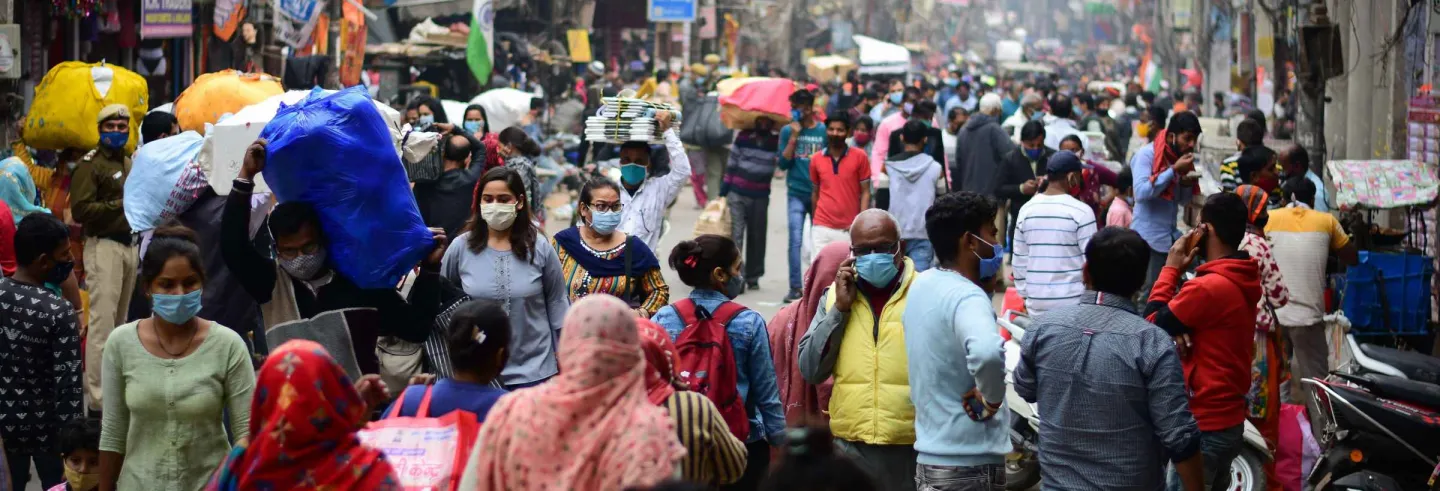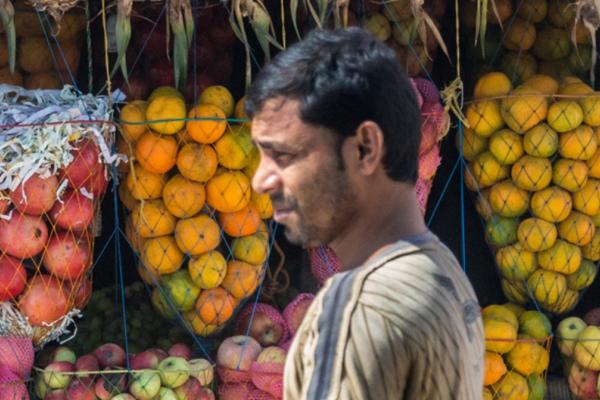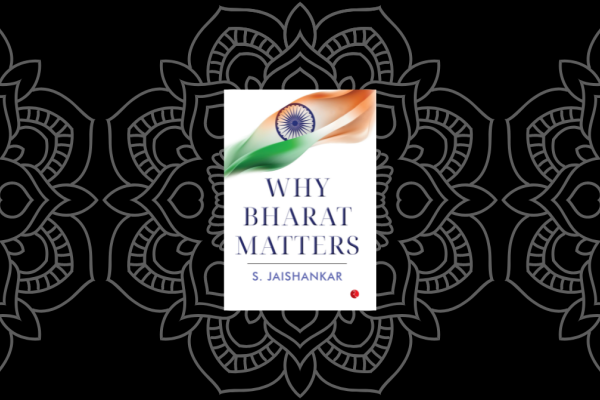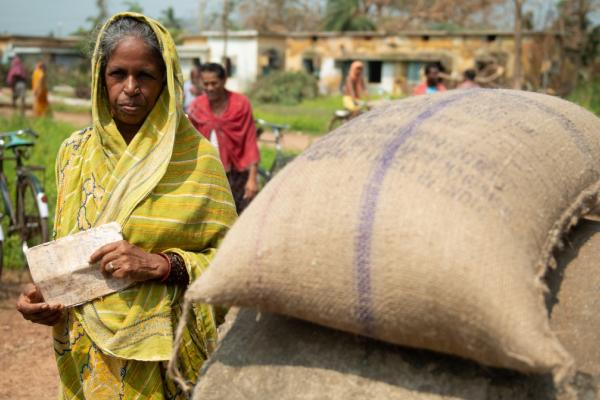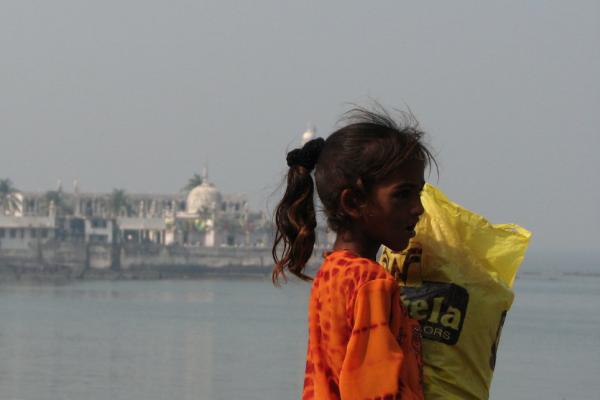The second wave of Covid-19 in India began around the middle of February 2021. In the beginning, it was centred around the smaller districts and towns of interior Maharashtra, including Akola and Amravati. Reports from there, of whole families being infected and of test positivity ratios in excess of 50%, were first vigorously denied by the state but confirmed soon after. A bit later, Punjab began to see cases associated with what the so-called 'UK variant' of the coronavirus, more technically named B.1.1.7. This spread rapidly to Delhi. Case numbers then began to soar across the country.
Early April saw daily cases first cross numbers seen at the peak of the first wave (a bit shy of 98,000 cases). Daily new cases continued to rise thereafter and by the end of April they were more than four times the value at the first peak. The rise continues as of this writing. Daily cases are currently in the vicinity of 410, 000, with a death toll that has just crossed 4,000 in a single day (7 May). Model-based forecasts are largely hopeful that the number should stabilise soon, although huge uncertainties in the data have complicated all attempts at modelling how the disease continues to spread.
The idea that India’s Covid-19 experience was exceptional was being openly discussed by early 2021.
The gap between the peak of the first wave, around mid-September 2020, and the onset of the second wave, was about five months. By the middle of that period, fatigue with both the intense initial lockdown and other restrictions had understandably mounted. The origins of an idea that may have played a substantial part in official thinking about the future trajectory of India’s Covid-19 epidemic can be traced to this time.
The idea that India’s Covid-19 experience was exceptional was being openly discussed by early 2021. By the middle of January, India had seen a sustained reduction in daily cases, to about 16,000 every day from a peak of around 98,000 daily. But once figures for Covid-19 deaths were divided by the size of the Indian population, a far smaller fraction of people were dying of the disease when compared with Brazil, the UK, or the US.
The difference was stark. The number of Covid-19 deaths per million population was 110 for India by 15 January, while it was 987 for Brazil and 1,200 for the USA. It was not just India, it was the neighbourhood too. In Bangladesh and Pakistan, the Covid-19 mortality rate was even smaller than that in India.
Was there then something that was protecting Indians and, more generally, South Asians? If there was, maybe it was reasonable to assume that the multiple waves that much of the world had seen, with later waves even higher than earlier ones, would never hit India. Even if there were multiple waves, the cost we would pay in deaths would be notably less. Perhaps the inexorable progress of the global pandemic had halted in India.
Was there then something that was protecting Indians and, more generally, South Asians?
It is important to address this question, because this optimism is likely to have largely underpinned India’s initial steps in response to the second wave of Covid-19.
What determines whether or not one will die from a Covid-19 infection? The single most important component for an individual is just age. This is complicated somewhat, but not irretrievably, by pre-existing health conditions. The infection fatality ratio or IFR — the number of deaths divided by the number of infections — rises exponentially with age, from being a practically negligible proportion for children less than 10 years of age, to being significantly more lethal than influenza for those older than 65.
The case fatality ratio, or CFR is different. It is the number of deaths divided by the number of confirmed cases of Covid-19, where ‘confirmed’ usually refers to the result of an RT-PCR test. The IFR and the CFR are very different for Covid-19 because of the large fraction of those who are asymptomatically infected. These are people who may not even know that they are infected with the virus because they show no or only very mild symptoms. The IFR is thus less than the CFR and is only inferred but not directly measured; while the CFR is directly obtainable from records of deaths and cases. The CFR and the mortality rate from Covid-19 referred to above are related simply to each other.
India is a relatively young country, with a median age of 28.4. The others in its neighbourhood are not too different— Pakistan has a median age of 22.8 and Bangladesh 27.6. Contrast this to median ages of 38.4 in the US, 40.5 in the UK, and 33.5 in Brazil. Only 6% of Indians are older than 65; for the US this number is 16.5% while for Brazil it is 9.6%. Being young hugely reduces the chances of dying of Covid-19. That automatically accounts for a good part of the discrepancy between Covid-19 mortality for the US and for India. But is there more?
South Asians settled in the US and the UK appear to be, if anything, somewhat at greater risk than Caucasians.
What about biological factors peculiar to South Asian populations? Perhaps Indians are genetically better adapted to dealing with Covid-19. However, South Asians settled in the US and the UK appear to be, if anything, somewhat at greater risk than Caucasians. Could some as yet unspecified feature of the microbiome, the complex set of gut bacteria that appear to be specific to individuals, diet and location in addition to other factors, be responsible? Perhaps, but all these variables might be expected to vary substantially between just the north and south of India, not to mention by socio-economic class in terms of dietary practices. Could vaccinations, in particular the BCG vaccine, be the clue? But Brazil has had a successful universal vaccination programme for the past several decades, including a mandatory BCG shot.
An adaptation of the so-called 'hygiene hypothesis' suggests that the relatively low hygiene conditions that Indians are surrounded by, and largely inured to, ensures that the response of the immune system to an external threat can be blunted. Since the body’s immune over-reaction to the Covid-19 virus has been linked to worse clinical outcomes, this is a logical possibility. This hypothesis has been carefully examined by linking Covid-19 mortality to sanitary and socio-economic conditions across many countries in the world. This is what is called an ecological correlation. It lumps people together in large groups, in this case countries, and makes group-level statements about what essentially should be a property of individuals.
Ecological correlations are, however, considered the weakest in the hierarchy of evidence for epidemiological hypotheses. They have been proven to be wrong in other settings. And the original hygiene hypothesis was supposed to explain something else, the relative increase in autoimmune conditions across developed nations with respect to less developed ones. At any rate, such a hypothesis needs to be bolstered by clinical and immunological data at the individual level.
Other ideas include increased exposure to air pollution, smoking and a non-vegetarian diet. The problem is that none of these are particularly unique to India.
Let us return to the mortality figures. One way to reduce the mortality from Covid-19 would simply be to count deaths inaccurately. About 100,000 people died in the first year of the pandemic, a number of about 275 per day.
Between 27,000 and 28,000 Indians die daily in a normal year. At the scale of a district, of which there are about 700 in India, this is about 40 deaths per day per district. A small fraction of deaths above that baseline might not be expected to attract much attention, given that Indians still predominantly die at home. A 1% increase on that baseline would be hardly noticeable in practice but would add to an excess of about 280 deaths a day for India as a whole. This is comparable to the roughly 275 per day recorded to have died of Covid-19 in the January 2020–January 2021 period. There’s considerable space to increase India’s Covid-19 mortality figures to align them with the non-Indian ones just here. In fact, credible estimates of the undercounting of deaths in the first wave yield a multiplicative factor of somewhere between 2 and 3.
The recording of what ought to have been assigned as Covid-19 deaths to other comorbid conditions further obscures the counting of deaths.
A number of press reports have appeared concerning the undercounting of deaths in the first wave. Such reports have mainly examined the discrepancies between official records and records of deaths in crematoria and burial grounds. Models suggest that even in the capital city of Delhi only about 15% of deaths may have been actually recorded, although this numerical estimate may be questioned because it used an IFR standardised for higher-income countries. The recording of what ought to have been assigned as Covid-19 deaths to other comorbid conditions further obscures the counting of deaths. In some cases, where the death occurred at home and because of a fear of the stigma of being associated with a Covid-19 patient, families may have arranged for bodies to be cremated or buried without a test being performed.
The final component is the denominator that enters the definition of the fatality ratio, the population of India in units of 100,000 people.
If India was a small homogeneous country, it would make sense to use a denominator of the entire population, since the whole population would be at risk from the disease. However, just the state of Uttar Pradesh (UP), with a population of about 221 million people, has more people than Brazil. If UP were a country, rather than a subnational entity, it would be the fifth largest in the world by population. Is it right to include the whole population of India in the denominator when calculating the Covid-19 mortality rate?
Some intuition comes from large-scale serological surveys. These yield what is called seropositivity, a percentage estimate of the number of people with antibodies towards the coronavirus and hence a past infection. The first Indian Council of Medical Research (ICMR) serosurvey in May–June 2020, concluded that about 0.7% of India has been infected. In January 2021, that number rose to 20%, according to the ICMR’s third serosurvey.
But that top-line figure conceals something important. Rural India saw seropositivities of less than 20%, while the number was more than 30% in urban slums. The 30% figure may actually have been an underestimate, linked to the decay in the antibodies that serological tests look for. Separate serological surveys for Mumbai, Delhi, Bengaluru, Pune, and Chennai found that more than 40%, in some cases 50%, of their populations had been infected before January. In fact, results from the first ICMR serosurvey, which found that overall about 0.7% of India had been infected by May–June 2020, were provided late and that too only partially, omitting numbers for the urban hotspots where the serosurvey was also done. This was likely for fear that discussions of the large seropositivities presumably obtained in these hotspots would derail the narrative that the disease was under control.
The second wave of Covid-19 in India has stripped bare the illusion that our experience of the first wave had adequately prepared us for what was to come.
The picture then is more complex. It must involve a gradient, between urban and rural India, in the likelihood of being infected. This calls for a change in the denominator, which assumed implicitly that all of India was equally susceptible.
What emerges finally is a nuanced picture. The explanation must lie in some combination of all of these factors.
But what is certainly true is that no Indian exceptionalism is required to explain the numbers. Mortality rates are low because the Indian population is young, because increases in the numbers of deaths over the background would not have attracted attention if spread out sufficiently, because the stigma surrounding the disease may have led to the cause of death being assigned to other co-morbidities or simply concealed, because local health officials may have encouraged under-reporting to present a rosier picture of the actual situation, but also because a strong gradient of infections between urban and rural India meant that all of India was not equally at risk across the period of the first Covid-19 year. Whether some subtle biological factors were also at play is an open question, but this isn’t needed to explain the apparent discrepancy.
Did a general belief that India was, and would continue to be, special, influence government policy? A committee established by the government to create a 'supermodel' claimed that India had already reached herd immunity by September 2020, and anticipated the pandemic would vanish by February. The task-force on Covid-19 did not hold a single meeting between 11 January and 15 April, according to news reports. A ruling party resolution lauded the prime minister’s leadership for defeating Covid-19. Permission was granted for large scale religious gatherings such as the Kumbh mela, as well as for rallies in poll-bound states where millions of people were mobilised.
More recent estimates of the CFR suggest that it has increased substantially, to align more with numbers from Europe and the US.
All this must have been based on some feeling that a second wave of disease could not possibly be on the horizon. It is hard to rationalise these decisions otherwise. A failure to appreciate these numbers and subtleties in counting may have well laid the seeds of a lack of preparation for the unusual intensity and strikingly steep rise of the second wave of cases.
The second wave of Covid-19 in India has stripped bare the illusion that our experience of the first wave had adequately prepared us for what was to come. The gap between official statistics and actual numbers on the ground has steadily widened. Reports of massive undercounting of deaths, with a sense of this undercounting obtained by comparing officially recorded numbers with those obtained simply by counting numbers of bodies at crematoria and burial grounds, point to a general abandonment of the idea that such statistics matter and are important to record honestly. Current delays in testing, in Delhi and many other cities, have reached a level where a patient with symptoms will likely recover by the time they can be tested and a result returned.
The idea that the Indian experience has been exceptional seems quaint at this time. More recent estimates of the CFR suggest that it has increased substantially, to align more with numbers from Europe and the US. It is very likely that many have died who should not have, because the oxygen or ICU units that should have been there for them were not available. For these and other reasons, the true toll of the Covid-19 pandemic in India may only be understood in retrospect and even then, perhaps only incompletely.
That India isn’t special is a good lesson to keep in mind for the future.
The views expressed here are those of the author.


